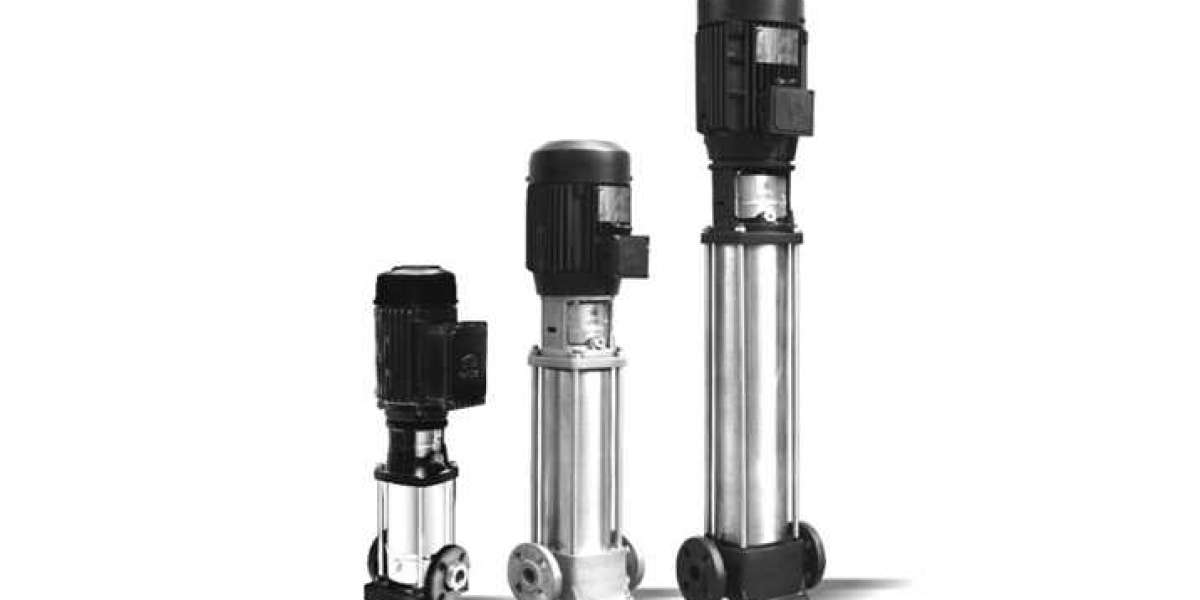When it comes to fluid handling systems requiring high pressure and efficient flow, a vertical multistage pump is often the ideal solution. Known for its space-saving design and high-performance capabilities, this pump type is widely used across domestic, commercial, and industrial sectors. In this blog, we will explore how it works, its key benefits, and the industries where it proves invaluable.
What Is a Vertical Multistage Pump?
A vertical multistage pump is a type of centrifugal pump that consists of two or more impellers arranged in a vertical configuration. These impellers are stacked and mounted on a single shaft, allowing fluid to pass through each stage under increasing pressure. This design enables the pump to achieve high heads (pressure) with relatively low flow rates.
The "multistage" element refers to the number of impellers it houses, which determines how much pressure the pump can generate. The more stages it has, the higher the pressure it can produce. Its vertical orientation helps save floor space and makes it suitable for installations where footprint is a concern.
How Does It Work?
In a vertical multistage pump, water enters the pump through a suction port at the bottom. As the impellers rotate, they impart velocity to the fluid, pushing it upward from one stage to the next. Each stage adds more energy to the fluid, increasing both its pressure and height.
This mechanism allows the pump to deliver water to significant elevations or to systems that require pressurised delivery over long distances. Typically, the shaft is supported by bearings at various points to ensure smooth operation and reduced wear.
Key Advantages
1. High Pressure Output
Due to the multistage design, these pumps can handle applications that require high-pressure delivery, such as boiler feedwater systems, water purification, and high-rise building supply systems.
2. Space-Saving Design
The vertical configuration takes up less floor space than horizontal alternatives, making it a preferred choice in plants or buildings with limited installation area.
3. Energy Efficiency
Vertical multistage pumps are known for their high energy efficiency, as each stage is engineered to optimise fluid velocity and pressure. Over time, this translates to reduced energy costs and better performance.
4. Quiet Operation
Thanks to the enclosed, balanced design and reduced vibration levels, these pumps operate more quietly than some other pump types, especially in indoor or residential applications.
5. Modular and Customisable
These pumps are highly adaptable to different operational requirements. Components such as impellers and stages can be added or removed depending on the pressure or flow needed.
Common Applications
The vertical multistage pump is a versatile piece of equipment, used in a wide array of sectors due to its reliable and efficient performance. Here are some of the most common applications:
Water Treatment Plants: Used in reverse osmosis systems, where high pressure is necessary to force water through membranes.
Boiler Feed: Delivers water to boilers at high pressure to ensure proper steam generation in industrial setups.
High-Rise Buildings: Supplies water to upper floors where normal pressure may not be sufficient.
Irrigation Systems: Used in agriculture to distribute water evenly across large fields.
Cooling and Heating Systems: Helps circulate water or coolants in HVAC systems, maintaining the desired temperature.
Fire Fighting Systems: Ensures strong water pressure for effective fire suppression in buildings and factories.
Installation and Maintenance Tips
To ensure optimal performance and long-term durability of a vertical multistage pump, proper installation and routine maintenance are essential.
Installation Tips:
Ensure the pump is installed vertically and aligned correctly to avoid shaft misalignment.
Mount the pump on a solid, level base to minimize vibration and noise.
Use vibration dampeners if the pump is installed in a sensitive or residential area.
Maintenance Checklist:
Regularly check for unusual noise or vibration.
Inspect mechanical seals and bearings for signs of wear.
Monitor pressure readings to detect any drop in performance.
Lubricate moving parts as per manufacturer recommendations.
Proper maintenance not only extends the pump’s lifespan but also ensures energy-efficient operation.
Choosing the Right Pump
Before selecting a vertical multistage pump, consider the following factors:
Required flow rate and pressure
Type of fluid to be pumped
Temperature and chemical compatibility
Installation space and orientation
Operational environment (e.g., indoor, outdoor, corrosive)
Consulting with a pump specialist or manufacturer can help you make an informed decision based on your specific needs.
Conclusion
Whether for commercial buildings, industrial systems, or municipal water supply, a vertical multistage pump is an efficient and reliable solution for high-pressure fluid handling. Its compact design, customisability, and operational efficiency make it a standout choice in today's demanding applications. With the right installation and routine maintenance, this pump can serve your system needs for many years, providing consistent and energy-efficient performance.







